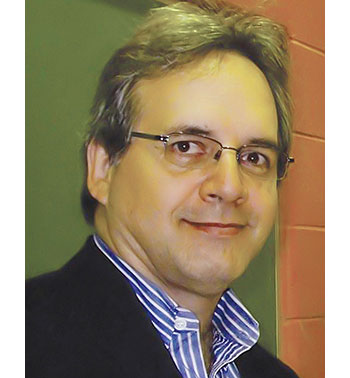Eco-friendly incinerator pegged for Thanh Hoa
 |
| CEO Steve J.R. Brant |
As the leader of a global group working on solid waste treatment, what do you think about the solid waste situation and its treatment methods in Vietnam at present?
Surveys show that an urban dweller discharges an average 0.8-1.2kg of solid waste per day. In rural areas, average waste volume is also increasing. Waste management in Vietnam, however, has mainly followed urban orientations. In respect to waste treatment, the most popular method is burying, which requires low cost but longer time for decomposition, harming the environment and polluting underground water sources.
In some areas, waste has been used to produce biogas, or compost, a kind of organic fertiliser. This method also affects the environment, as it produces an awful smell, and it is difficult to collect and treat the associated waste-water.
The waste-to-energy (WTE) plant in Thanh Hoa is the company’s first project of this kind in ASEAN. Could you brief us on the project?
Naanovo’s hi-tech waste treatment plant project in Thanh Hoa has received the Vietnamese government’s in-principle approval. Using Naanovo’s state-of-the art technology, urban waste is burnt and transformed into energy. This method has been effectively applied in Sweden. The technology ensures high efficiency, protecting the environment, radically treating disease-carrying germs in garbage, doing no harm to underground and surface water sources, and in the meantime producing energy.
Our WTE plants feature a module-based design (each module having a treatment capacity of 180 tonnes of garbage per day), making it rather flexible to expand treatment capacity commensurate to garbage volumes. Each module could burn waste at an average of 1,050 degrees Celsius, ensuring the destruction of most inflammables and hard metals. This will discharge less toxic gas, such as dioxin or furan, into the environment, while generating at least six megawatts per hour.
What factors have underpinned Naanovo’s decision to build a WTE plant in Vietnam?
Waste sources in Vietnam’s major locations have been rising steadily. This is a stable feedstock for the WTE plant. Our Thanh Hoa-based plant has benefitted from the active support of state-run Electricity of Vietnam (EVN), and from provincial management agencies.
We highly appreciate attention from the Vietnamese government in supporting investors of waste treatment projects, particularly through Decision 31/2014/QD-TTg, which introduced a mechanism to support WTE projects in Vietnam.
Accordingly, the power buying price from WTE plants has increased from 4 UScents to 10.05 UScents per kWh. The Ministry of Construction has also set the waste treatment fee applied to WTE plants at VND410,000 per tonne of garbage (equal to $19.23 per tonne).
What will Vietnam’s management agencies do to promote the development of hi-tech solid waste treatment facilities in the country?
Technology-intensive waste treatment projects often demand the huge investment capital in the range of $100-$500 million, due to costly equipment. Naanovo is confident moving forward with this hi-tech project in Vietnam because we possess state-of-the art technology of global interest, and we have the capacity to sell the project items well.
Foreign investors often borrow loans for their project implementation. Before lending, banks often check the project associated records carefully. Therefore, we expect the local authorities will help us process the necessary procedures and documents as soon as possible. This will enable the project to ensure timeliness, recoup investment capital, and help Vietnam attract more hi-tech waste treatment projects.
What the stars mean:
★ Poor ★ ★ Promising ★★★ Good ★★★★ Very good ★★★★★ Exceptional
Latest News
More News
- Mitsubishi Estate launches Logicross Hai Phong - a milestone in logistics evolution (November 20, 2024 | 14:32)
- Semiconductor workforce partnerships deliver industry-relevant training (November 20, 2024 | 10:58)
- German Quickpack to invest $31.7 million in Long An province (November 20, 2024 | 09:31)
- Foreign-invested enterprises drive logistics investment in the southeast region (November 20, 2024 | 09:27)
- Chile visit underscores trade benefits (November 19, 2024 | 10:00)
- Trump’s second term impacts sci-tech activities and industry 4.0 technologies (November 18, 2024 | 10:00)
- Vietnam eyes nuclear revival to bolster energy security (November 14, 2024 | 16:46)
- Kyokuyo completes $13.5 million seafood factory in Vietnam (November 14, 2024 | 12:19)
- VinFast receives $3.5 billion funding from Vingroup and Pham Nhat Vuong (November 14, 2024 | 06:38)
- Localities sprint to reach FDI targets (November 13, 2024 | 10:00)















 Mobile Version
Mobile Version